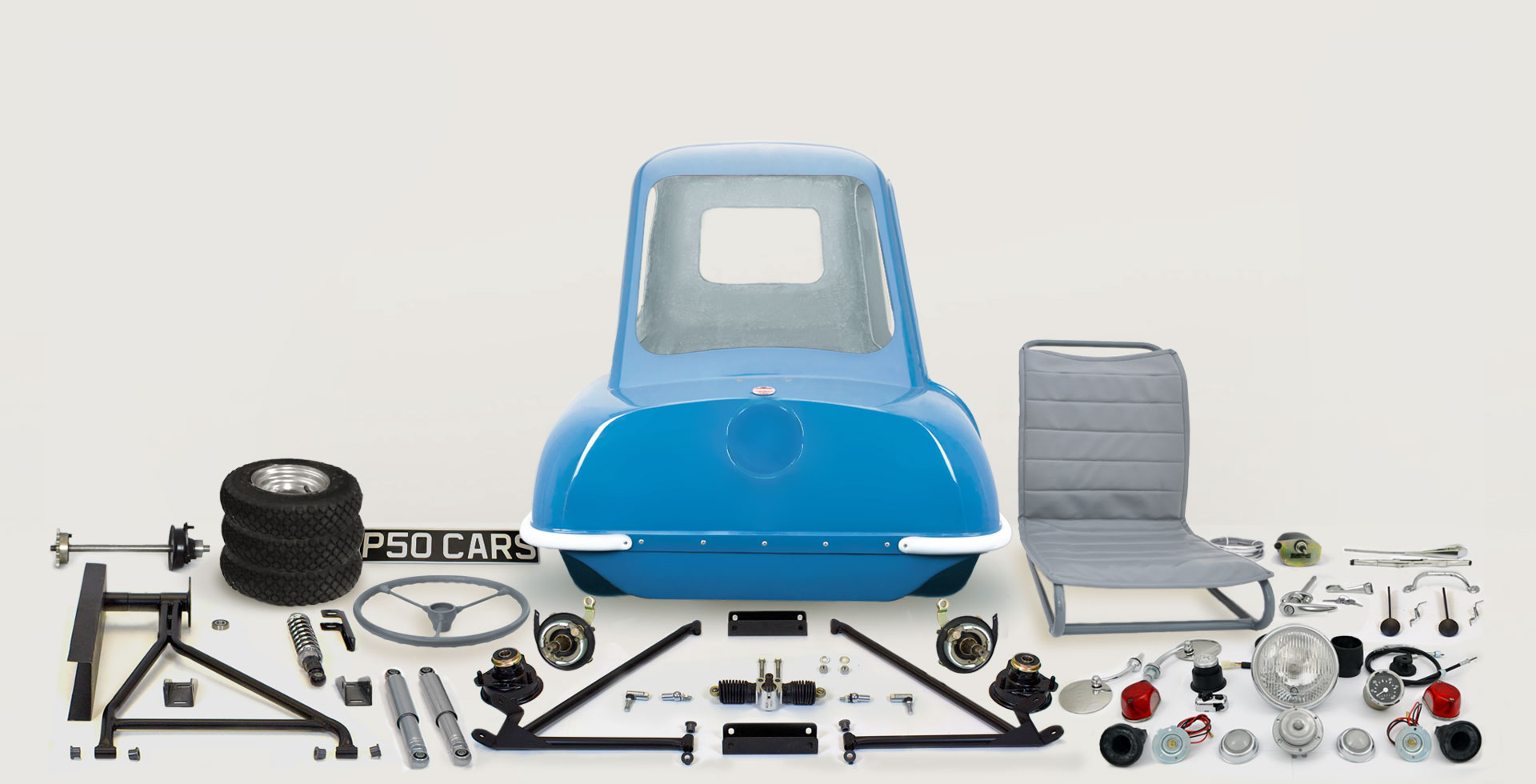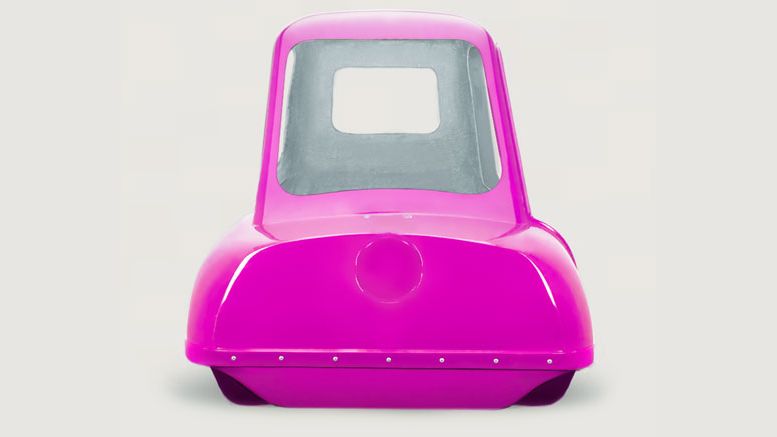Build the smallest car in the world with this DIY kit
It can fit through doorways!

The smallest car ever manufactured is staging a contemporary comeback, and we’re in love with its compact, retrofied design.
At 137cm long and 99cm wide, the original Peel P50 from 1962 took up less room on the ground than a phone box. It has been painstakingly remodelled with handcrafted parts by the team at P50 Cars, who are selling it as a kit for motoring enthusiasts to put together themselves.
We’ve covered a few build-it-yourself hacks and products on Creative Bloq – everything from how to build your own stylus to advice on how to create your own typeface, but this is the first time we’ve seen a DIY car, as far as I can remember.

While it didn’t exactly set the world alight, the original Peel P50 acquired a small but dedicated cohort of enthusiasts who ensured that original versions of the car have sold for six-figure sums at auctions more than once. Yes – that much for a one-person vehicle that was so tiny it was capable of fitting through doorways, as was memorably demonstrated on an episode of Top Gear in 2007.
The new P50 isn’t a straight like-for-like recreation – its design has been updated in ways that I love. It’s a lot less boxy and angular than the original, with sleeker curves that give it a retro-futuristic flavour like something out of The Jetsons, or the video game series Fallout if you want a more contemporary reference.
The kits come with everything you need to get the car on the road – and according to the manufacturers, registering it should be straightforward as it’ll generally be classified as a moped or light motorcycle.
You can fit it with either a four-stroke petrol engine or a high-torque electric motor, depending on preference – with petrol prices where they are right now, the electric motor seems like the obvious choice.
Get the Creative Bloq Newsletter
Daily design news, reviews, how-tos and more, as picked by the editors.

There are a few different versions of the car available, and ordering is done through P50 Cars directly. They’ll build the parts to order once you ask for them, so you can expect a gap of a few weeks before receiving the kit, which they then estimate will take about 50 hours to put together.
I’d have to imagine they’re assuming a degree of competence on the assembler’s part there, as I do not think a universe exists in which I personally would be capable of assembling a car in 50 hours.
If you’re like me and wouldn’t have a clue about handcrafting car parts, why not check out our guides to the best 3D modelling software and the best 3D printers. Digitally building a car might be as close as most of us get.
Read more:

Thank you for reading 5 articles this month* Join now for unlimited access
Enjoy your first month for just £1 / $1 / €1
*Read 5 free articles per month without a subscription

Join now for unlimited access
Try first month for just £1 / $1 / €1

Jon is a freelance writer and journalist who covers photography, art, technology, and the intersection of all three. When he's not scouting out news on the latest gadgets, he likes to play around with film cameras that were manufactured before he was born. To that end, he never goes anywhere without his Olympus XA2, loaded with a fresh roll of Kodak (Gold 200 is the best, since you asked). Jon is a regular contributor to Creative Bloq, and has also written for in Digital Camera World, Black + White Photography Magazine, Photomonitor, Outdoor Photography, Shortlist and probably a few others he's forgetting.
